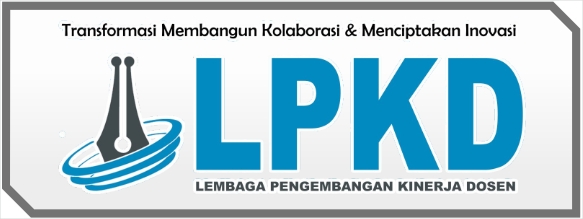HUBUNGAN PARITAS DAN DUKUNGAN SUAMI DENGAN PENGGUNAAN ALAT KONTRASEPSI INTRA UTERINE DEVIDE (IUD) DI KLINIK PRATAMA HANNA KASIH TAHUN 2020
DOI:
https://doi.org/10.55606/jurrikes.v1i2.434Keywords:
Parity, Husband's Support, IUD Use.Abstract
Based on data from Indonesia's Health Profile in 2016, Indonesia has a population of 258,704,986 people. Indonesia still ranks fourth with the largest population in the world after America, India and China. The total population of Indonesia in 2019 is estimated at 268,074,565 people, consisting of 117,674,363 urban residents and 150,400,202 rural residents. One of the programs to reduce population growth in realizing a family planning program (KB). The results of the prevalence of family planning in Indonesia based on the 2015 Fertile Age Couples Monitoring Survey reached 65.4% with the IUD method, which is still very low (4.7%). This study aims to determine the relationship between parity and husband's support with the use of IUDs at the Hanna Kasih Primary Clinic in 2020. The population in this study were acceptors who currently use IUD KB and have used IUD KB but now choose other types of family planning. The number of samples in this study were taken by total sampling, amounting to 30 people. The results obtained in this study from 30 respondents the majority were Scundipara, namely 11 (36.7%) respondents. Based on husband's support, the majority received positive husband support, namely 22 (73.3%). Based on the bivariate analysis, there is a significant relationship between parity and husband's support with the use of IUD contraceptives at the Pratama Hana Kasih clinic in 2020, with p value for parity <0.05 (p = 0.015) and for husband support with p value <0.05. (p = 0.000). It is hoped that the head of the Pratama Clinique Hanna Kasih will continue to provide support in the selection of the IUD contraceptive and the husband will continue to provide positive support for the wife to continue to use the IUD contraceptive device.
References
Agustina, Soebacman. 2015. Cetakan 1. Syura Media Utama: Yokyakarta
Agustina P. Hubungan Usia, Paritas dan Dukungan Suami dengan Pemilihan Kontrasepsi IUD di DUsun Getasan Kab. Semarang
Dewi A. Holidy I. 2015. Faktor-Faktor Yang Berhubungan Dengan Pemilihan Alat Kontrasepsi. JUrnal Ilmiah Keperawatan Sai Betik Bandar Lampung
Dinas Kesehatan Provinsi Sumatera Utara. 2016. Profil Kesehatan Sumatera Utara Tahun 2016
Depkes RI. 2010. Kesehatan Reproduksi: Jakarta
Farokta F. 2017 Dukungan Suami Dengan Minat Ibu Dalam Pemilihan Kontrasepsi IUD Di Dusun Tegalan Desa Kauman Kecamatan Ngoro Kabupaten Jombang
Fitri P.Y. Fitriyah N. 2018. Gambaran Karakteristik Akseptor Keluarga Berencana (KB) Metode KOntrasepsi Jangka Panjang (MKJP) Di Desa Payaman. JUrnal Biometrika dan Kependudukan.
Goldstein J. 2018. Siapa yang Seharusnya Mendapatkan Penggunaan Akseptor KB, diakses 15 Mei 2019. http://blogs.wsj.com/health/2009/11/03/who-should-get-a-pap-smear/
Hidayat A. 2015. Metode Penelitian Kebidanan dan Tehnik Analisa data. Edisi Pertama. Jakarta : Salemba Medika
Ikmanun, Luluk. 2015. Hubungan tingkat pengetahuan dan motivasi wanita usia subur dalam melakukan penggunaan KB.diakses 19 Mei 2019
Jannah N. Sri Rahayu. 2017. Kesehatan Reproduksi dan Keluarga Berencana. EGC: Jakarta
Kementrian Kesehatan RI, 2015. Profil Kesehatan Indonesia. http://www.depkes.go.id. Diakses Agustus 2016
Kementrian Kesehatan RI, 2017. Profil Kesehatan Indonesia. http://www.depkes.go.id. Diakses November 2017
Kurniawati, D, Ninuk. 2016. Asuhan Kebidanan Pada Keluarga Berencana. Jakarta. Salemba Medika.
Kusumadewi dkk. 2013. Informatika Kesehatan, Edisi 1.Yogyakarta. Graha Ilmu.
Lemeshow S., Hosmer D.W., Klar J., & Lwanga S.K. 1997.Besar Sampel dalam Penelitian Kesehatan. Yogyakarta: Gadjah Mada University Press.
Lina Mardiana. 2010. : Penggunaan IUD . Jakarta. Penebar Swadaya.
Meta Kaporina. 2016. Hubungan Paritas Terhadap Minat Penggunaan Alat Kontrasepsi Di Puskesmas Banguntapan II Bantul Yogyakarta
Morrison, R.S., Moody, & Shelton, Pap Smear: Wanita Usia Subur dan KB, diakses 5 Maret 2019, http://www.rno.org/journal/index.php/online-journal/article/viewfile/236/282
Notoatmodjo S. 2013. Pendidikan dan Prilaku Kesehatan. Rineka Cipta: Jakarta.
Notoatmodjo S. 2007.Promosi Kesehatan dan Ilmu Perilaku. Jakarta. Rineka Cipta.
Rencana Strategis Badan Kependudukan dan Keluarga Berencana Nasional Tahun 2015-2019 (BKKBN) 2015.
Saroha. 2015. Kesehatan Reproduksi dan Kontrasepsi, Jakarta: CV. Trans Info Media
Sri Handayani. 2018. Buku Ajar Pelayanan Keluarga Berencana. STIKes Estu Utomo Boyolali
Sulistyawati, Ari. 2013. Pelayanan Keluarga Berencana. Jakarta: Salemba Medika.
Titik Kurniawati. Lucky Taufika Yuhedi. 2018. Buku Ajar Kependudukan dan KB. EGC : Jakarta
Wasti P. Rina K. Yolanda B. 2018. Hubungan Dukungan Suami Dengan Pemilihan Jenis KOntrasepsi Intra Uterine Device Pada Wanita Usia Subur Di Puskesmas Makalehi Kecamatan Siau Barat. E-Journal (eKp) Vol 6 No 2 Agustus 2018
Wiwin W. Yuliana M. Fatmah Z. Hubungan Usia, Pendidikan dan Paritas dengan Penggunaan AKDR Di Puskesmas Doloduo Kabupaten Bolaang Mongondow. Jurnal Ilmiah UMGo. Volume 8 Nomor 1 Tahun 2019
Yanti, SST.2015. Model Asuhan Kebidanan CoC Turunkan AKI dan AKB. http://ugm.ac.id. Diakses 13 Maret 2015.
















